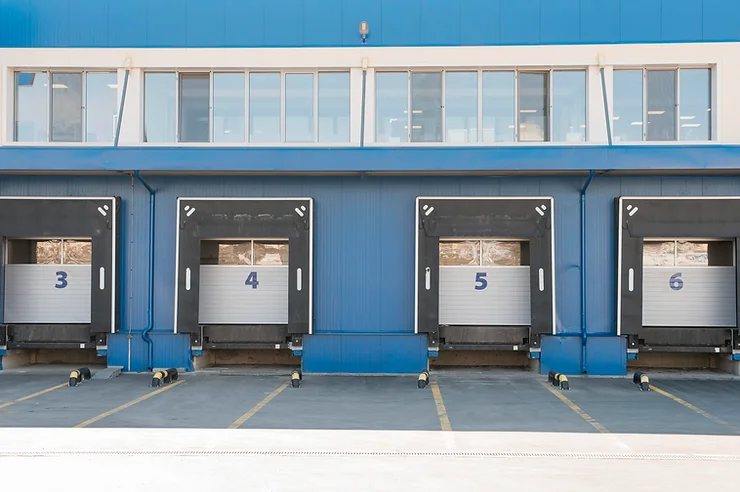Refrigerated shipping, also known as reefer shipping, plays a pivotal role in the global supply chain. It enables the transportation of perishable and temperature-sensitive goods across vast distances, connecting producers to consumers worldwide. From fresh produce and pharmaceuticals to delicate electronics, maintaining specific temperature conditions during transportation is critical to preserving the quality and integrity of these goods.
Challenges in Refrigerated Shipping
While the concept of refrigerated shipping seems straightforward, its execution presents several challenges. One of the primary concerns is maintaining consistent temperature control throughout the entire journey. Fluctuations in temperature can compromise the quality and safety of goods, leading to spoilage, degradation, or even complete loss.
Moreover, different goods have diverse temperature requirements, further complicating the logistics. For instance, pharmaceuticals might require precise temperature ranges, while fresh produce or frozen foods have their own specific needs. Meeting these varying demands efficiently is crucial.
What should be taken into account?
In the realm of refrigerated shipping, several crucial factors must be considered to ensure the safe and efficient transportation of perishable goods:
Temperature Requirements
Different goods have specific temperature needs for preservation. Understanding and adhering to these requirements throughout the entire transportation process is vital to maintaining product quality.
Equipment Reliability
The reliability of refrigerated containers and transport units is paramount. Regular maintenance, quality checks, and using state-of-the-art equipment can prevent breakdowns that may compromise the cargo.
Monitoring and Control Systems
Implementing advanced monitoring systems equipped with sensors and IoT technology allows real-time tracking of temperature variations. These systems enable proactive measures to rectify deviations and ensure cargo remains within the desired temperature range.
Cold Chain Integrity
Maintaining the integrity of the cold chain involves seamless coordination between all stakeholders, from producers and shippers to carriers and receivers. Any disruptions in this chain can lead to compromised goods.
Regulatory Compliance
Adhering to industry standards and regulations regarding the transportation of perishable goods is essential. Compliance ensures the safety and quality of goods while avoiding legal or regulatory complications.
Risk Management
Developing contingency plans and risk mitigation strategies for unforeseen events, such as equipment failure, weather disruptions, or delays, is necessary to minimize potential losses.
Innovative Solutions
To address the challenges of refrigerated shipping, the logistics industry continually develops and adopts innovative solutions:
-
Advanced Refrigeration Technologies: Continuous advancements in refrigeration technologies have led to more precise and reliable temperature control systems. These systems utilize sensors, IoT devices, and data analytics to monitor and regulate conditions inside shipping containers, ensuring optimal temperatures are maintained.
-
Smart Packaging: Intelligent packaging solutions equipped with temperature-monitoring sensors help track goods in real-time. This enables proactive measures in case of any deviations from the required temperature range, allowing for quick interventions to maintain product quality.
-
Cold Chain Management: Comprehensive cold chain management involves a synchronized effort across the entire supply chain, from storage facilities to transportation and delivery. This includes proper handling procedures, training for personnel, and effective coordination among stakeholders.
What type of transportation should you choose?
The choice of transportation for refrigerated shipping depends on various factors, including the type of goods, distance, urgency, and cost considerations. Here are some common modes of transportation used for refrigerated shipping.
Refrigerated Trucks
-
Suitable for Short Distances: Ideal for transporting perishable goods within a specific region or country.
-
Flexibility: It offers direct delivery and allows for multiple stops, making it suitable for smaller loads or diverse destinations.
-
Temperature Control: Equipped with refrigeration units, ensuring temperature control throughout the journey.
Refrigerated Containers (Reefers)
-
Ocean Freight: Reefers are commonly used for transporting perishable goods via sea routes. They offer ample space and can accommodate large quantities of goods.
-
Intermodal Transport: These containers can be seamlessly transferred between different modes of transportation (ships, trains, and trucks), providing flexibility and global reach.
-
Temperature Stability: Reefers are designed to maintain consistent temperatures even during long voyages.
Air Freight
-
Speed: Air freight is the fastest mode of transportation, ideal for perishable goods with short shelf lives or urgent deliveries.
-
Temperature Control: Specialized cargo planes equipped with refrigeration systems ensure precise temperature control during transit.
-
Higher Costs: Generally more expensive compared to sea or land transport due to the speed and specialized handling.
Rail Transport
-
Long-Distance Transport: Trains are suitable for moving large quantities of goods across continents, providing a cost-effective solution for long distances.
-
Stability: Offers relatively stable conditions for temperature-sensitive cargo.
-
Intermodal Options: Can be integrated with trucks or containers for door-to-door delivery.
Choosing the Right Mode
-
Goods’ Requirements: Consider the specific temperature requirements and sensitivity of the goods being transported.
-
Distance and Time: Assess the urgency and distance of the shipment. For shorter distances, trucks might suffice, while longer distances might require ocean or air freight.
-
Cost Consideration: Balance the cost implications with the urgency and requirements of the goods.
-
Infrastructure and Accessibility: Consider the availability of infrastructure and the accessibility of different transportation modes to the origin and destination.
Selecting the appropriate mode of transportation involves weighing these factors to ensure that the goods reach their destination safely, maintaining their quality and freshness throughout the journey. Often, a combination of transportation modes in an intermodal approach might be the most effective solution for refrigerated shipping, optimizing efficiency and minimizing costs.
TopTrans: Pioneering Refrigerated Solutions
Diverse Transportation Modes
TopTrans stands out for its versatility, offering a gamut of transportation modes—land, sea, air, and rail. This diverse fleet ensures secure and timely delivery, regardless of the chosen route.
Specialization in Sensitive Cargo
A distinguishing feature of TopTrans is its expertise in handling sensitive cargo, from perishable goods to pharmaceuticals requiring specific temperature controls.
Reliability and Safety
TopTrans guarantees reliability and safety in every shipment. Rigorous protocols and cutting-edge technology safeguard cargo, providing clients with peace of mind.
Toptrans’ Coverage and Operational Strength
Our operational reach extends across various geographical territories, covering Georgia, including key locations like Tbilisi, Batumi, and Poti. Furthermore, our services span European Union countries, Turkey, Central Asian States, Ukraine, and China. TopTrans excels at adapting to dynamic geopolitical changes, offering alternative transport solutions amid evolving scenarios, and ensuring your cargo’s uninterrupted journey.
Competitive Pricing
The ultimate service charge depends on the specific cargo attributes, selected routes, and any extra services needed.
When it comes to refrigerated shipping TopTrans offers unparalleled expertise and reliability. Our commitment to excellence, comprehensive services, and adaptability to global dynamics make us the go-to choice for navigating the complexities of refrigerated shipping.








